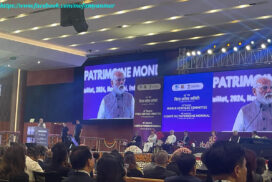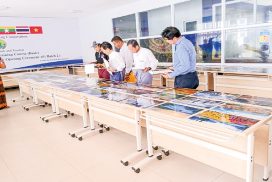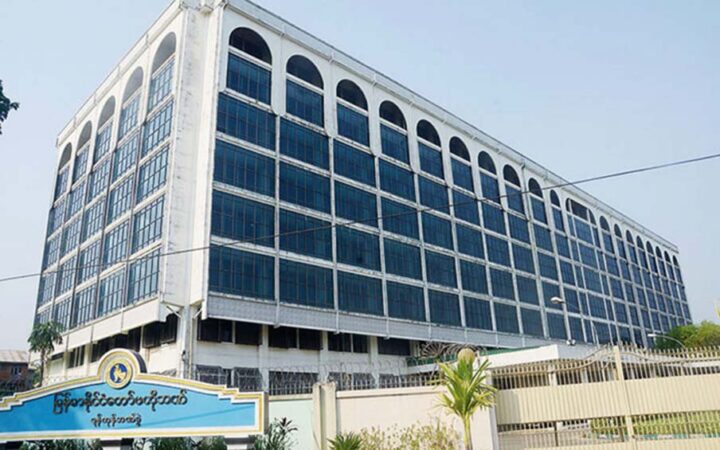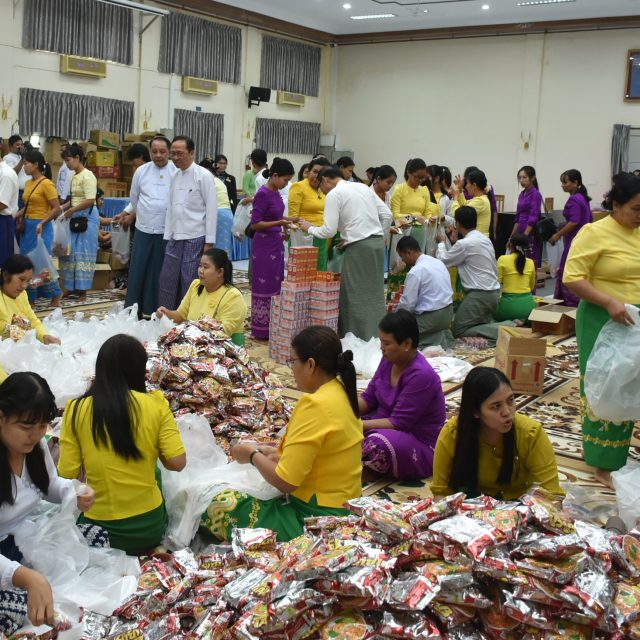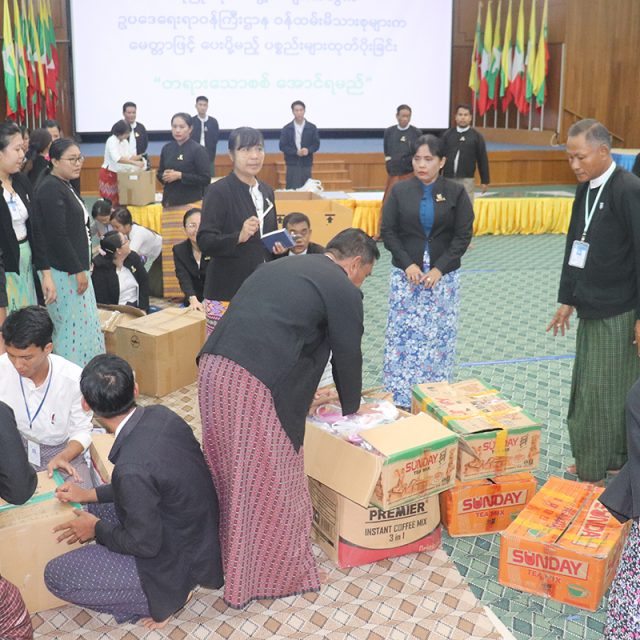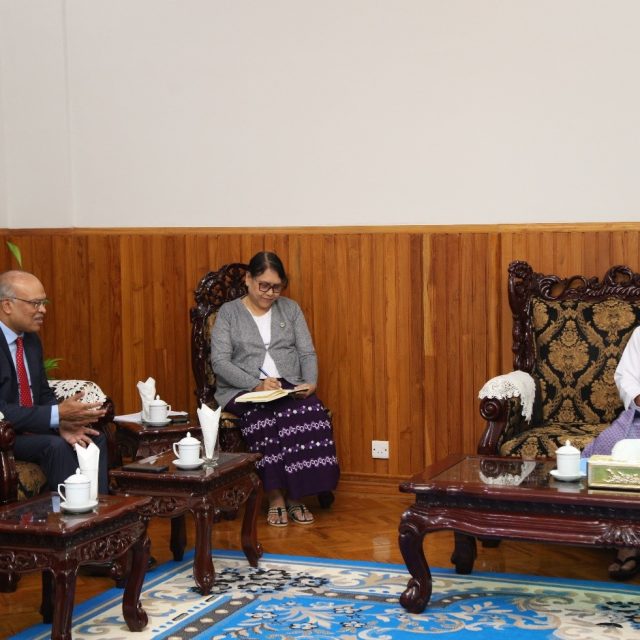By Yin Nwe Ko
When I asked my students whether the terms “earth” and “world” carry the same meaning, nearly all of them responded with a resounding “Yes.” I, too, held this belief when I was young. However, the meanings and essences of “earth” and “world” differ significantly. There are numerous distinct usages between these two words, each conveying unique aspects and connotations.
The terms “world” and “Earth” are often used interchangeably in everyday language, but they hold distinct meanings and connotations. Understanding the differences between these two concepts can enrich our perspective on the planet we inhabit and our place within it.
Our Physical Planet
Earth refers to the third planet from the Sun in our solar system. It is a unique celestial body, distinguished by its ability to support life. Earth’s atmosphere, hydrosphere, and biosphere create a delicate balance that sustains diverse ecosystems. It has a radius of about 6,371 kilometres and is composed of various layers, including the crust, mantle, and core.
From a scientific standpoint, Earth is studied in the fields of geology, meteorology, oceanography, and ecology, among others. It is a dynamic entity, constantly evolving through processes such as plate tectonics, erosion, and volcanic activity. The study of Earth encompasses not only its physical properties but also the complex interactions between its various systems and the life forms it supports.
World: A Human Construct
In contrast, the term “world” is more abstract and carries broader implications. The world encompasses the collective human experience, culture, society, and civilization. It refers to the realm of human existence, encompassing not just the physical Earth but also the mental, social, and cultural dimensions of life.
When we speak of “the world,” we often refer to the human aspects of our existence. This includes social structures, economic systems, political entities, and cultural expressions. Human interactions, beliefs, and values shape the world. It is a construct that evolves with our ideas, innovations, and social dynamics.
Cultural and Philosophical Perspectives
Culturally, the concept of the world can vary significantly. Different societies have unique worldviews shaped by their history, religion, and cultural practices. For instance, the ancient Greeks had the concept of “oikumene”, which referred to the known, inhabited world. In contrast, many Indigenous cultures view the world as a living entity, interconnected with all forms of life.
Philosophically, the idea of the world can be explored through various lenses. Existentialist thinkers might ponder the meaning of human existence within the world, while environmental philosophers emphasize the interconnectedness of all life and the need for sustainable living. The world, in this sense, is a canvas for human thought and reflection.
Interconnected Realms
While Earth and the world are distinct concepts, they are deeply interconnected. The physical state of the Earth profoundly impacts the human world. Climate change, natural disasters, and resource depletion are examples of how Earth’s changes affect human societies. Conversely, human activities such as deforestation, pollution, and urbanization alter the physical environment of Earth.
Understanding the relationship between Earth and the world is crucial for addressing global challenges. Sustainable development, conservation efforts, and international cooperation require a holistic approach that considers both the physical and human dimensions of our planet. Recognizing the interdependence between Earth and the world can inspire more responsible stewardship of our environment and more compassionate global interactions.
In addition, Earth and the world represent two facets of our existence. Earth is the physical planet, a complex and dynamic entity that supports life. The world, on the other hand, is a human construct encompassing our societies, cultures, and civilizations. Both concepts are essential for understanding our place in the universe and our responsibilities as inhabitants of this planet. By appreciating the differences and connections between the Earth and the World, we can foster a more harmonious and sustainable future for all.
A personal universe
The distinctions between the Earth and the world have been elucidated in the literature. Yet, allow me to present the definitions in the Myanmar language for clarity. The Earth (ကမ္ဘာမြေ) refers to the planet within our solar system, while the World (လောက) encompasses the broader human experience and existence. But what does “my world” truly signify? It embodies the unique realm of my experiences, emotions, and aspirations – a personal universe where my dreams flourish and my soul finds solace.
Journey of life
Reflecting on the environment I navigate daily, it’s fair to say it is a world of my own. This world includes people, living beings, and inanimate objects. When I look back on the sphere of my life, it’s quite a narrow one. I was born in this small town, lived here, and grew old here – spanning 70 years. Except for the four years spent in a larger city for university, my world has remained quite confined, and even more so in recent years. Since 2009, I’ve ventured beyond my town’s municipal boundaries no more than two or three times. Each day follows a simple routine: teaching students, eating, reading, writing, sometimes playing the Yamaha electronic keyboard, taking short walks inside my home, and then sleeping. This routine has been my life since 2009.
As I reflect on my life, I realize I haven’t undertaken grand responsibilities at the neighbourhood, township, or national levels. Yet, within my small world, I have diligently fulfilled my duty of teaching children. I strive to ensure my world remains intact and does not cause harm to the broader world. This way, I find contentment. Given my health and circumstances, I am satisfied with what I’ve been able to contribute. I have peace of mind.
Lives comparison
Sometimes, I compare my narrow world to that of a president of a great nation. The president’s world is vast, encompassing not only their country but also considerations for the entire globe. They strive to enhance their nation while promoting global peace and development. Comparing our worlds, mine is but a tiny speck, like one-tenth of an acre, while the president’s world is vast and expansive. In such a comparison, I may seem small, like an ant, while the president is like a towering mountain. However, despite the difference in scale, there are many similarities between us. Both of us eat two meals a day, and both have the physiological processes of blood circulation, digestion, and waste elimination. Both of us desire to contribute positively to the world. The president, with their broader influence, and I, within my limited capacity, share the same fundamental essence.
At the start of this article, I discussed the Earth and the World and their differences. Now, I have compared the worlds of two individuals: myself and a president. This comparison serves as an example to illustrate that, fundamentally, all beings are the same. Ultimately, whether it is the president or myself, we will both leave behind only a small amount of ashes and smoke. Contemplating this, it becomes clear that seeing the truth reduces greed, anger, delusion, and pride. Consequently, the human world, The World, becomes more peaceful and serene.
Deeper thought
Expanding on this idea, let’s delve deeper into what constitutes “my world”. My world is not just about the physical space I inhabit but also about the relationships, experiences, and daily routines that shape my existence. Each interaction with my students, each book I read, and each note I play on the keyboard adds a layer to my world. These seemingly small actions collectively create a tapestry of life that is uniquely mine. My world is a reflection of my inner self – my thoughts, feelings, and aspirations.
In contrast, the president’s world is shaped by their interactions on a global scale. Their decisions impact millions of lives, and their responsibilities extend far beyond their immediate surroundings. They must navigate complex political landscapes, make critical decisions for their nation, and work towards global harmony. The weight of their world is immense, filled with challenges and opportunities that require wisdom, foresight, and compassion.
Despite these differences, the core of our worlds remains the same. We both seek to fulfil our roles to the best of our abilities, driven by a desire to contribute positively to society. Whether it’s teaching a child to read or negotiating a peace treaty, our actions are motivated by the same underlying principles of care, responsibility, and a commitment to making the world a better place.
More exploration
Furthermore, the notion of “my world” extends to how we perceive and interact with the larger world around us. While my physical travels may be limited, my mind is free to explore the vastness of human knowledge and experience. Through books, conversations, and reflections, I can connect with ideas and perspectives from all corners of the globe. This intellectual and emotional exploration enriches my world, making it more vibrant and meaningful.
The president, too, must balance their immediate responsibilities with a broader vision. They must be aware of global trends, cultural nuances, and historical contexts to make informed decisions. Borders do not confine their world; it is an intricate web of interconnected issues and relationships that demand constant attention and adaptation.
In the end, our worlds – though vastly different in scale and scope – are bound by a shared humanity. We both experience joy, sorrow, hope, and despair. We both strive for personal and collective growth. And we both recognize the transient nature of life, understanding that our time here is limited. This awareness shapes our actions and attitudes, guiding us toward a path of compassion and understanding.
By acknowledging the commonalities that unite us, we can foster a greater sense of empathy and cooperation. Whether in a small town or on the global stage, we all have a role to play in creating a world that is just, peaceful, and thriving. It is through our individual efforts, no matter how small, that we contribute to the larger tapestry of human existence.
All in all, the comparison between the Earth and the World serves as a metaphor for understanding the differences and similarities between our personal worlds. While the Earth is a physical entity, the world is shaped by our experiences, actions, and relationships. By embracing our roles and responsibilities within our own worlds, we can make meaningful contributions to the broader human experience. And in doing so, we find contentment, purpose, and a sense of fulfilment that transcends the boundaries of our individual lives.



